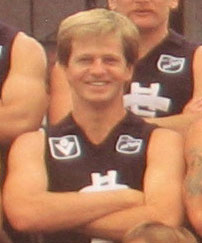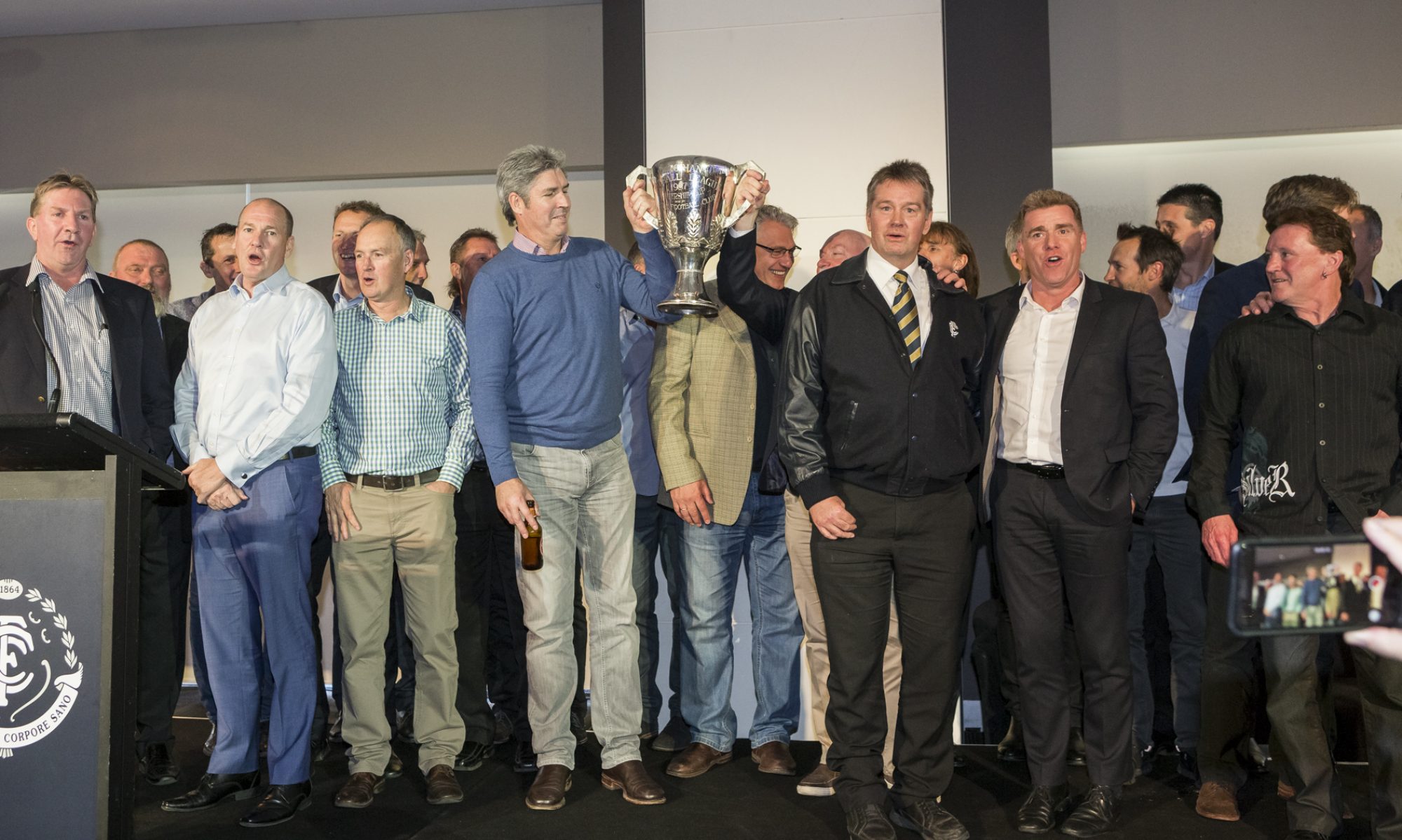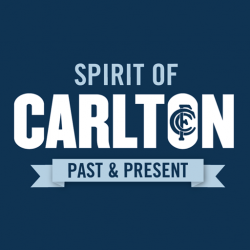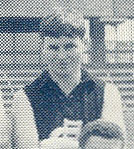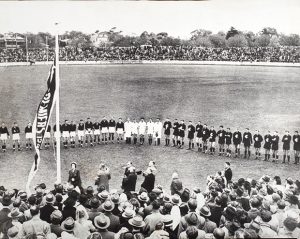The art deco clock was presented to Deacon in the year he tied for what was then the Robert Reynolds Trophy (now John Nicholls Medal) with the then club captain Ern Henfry. The clock carries a silver-plated plaque upon which are inscribed the following words;
CARLTON FOOTBALL CLUB
Equal Best & Fairest
1947
Won by
Bert Deacon
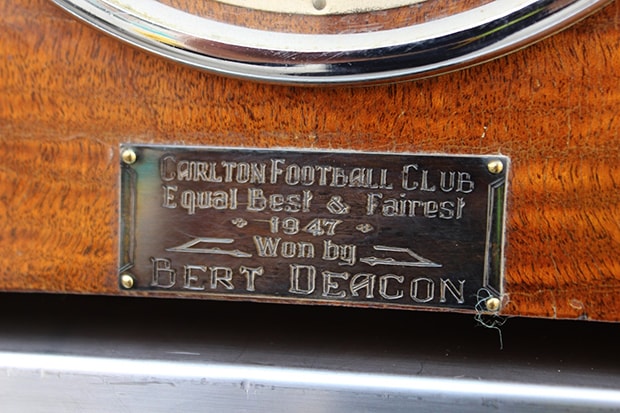
The inscription on the mantel clock.
According to the Carlton Annual Report of that year, only the trophies to Deacon and Henfry were presented in that year, along with an award to Jack Bennett for Most Consistent Player.
As the then secretary Harry Bell reported: “Apart from the two above-mentioned trophies your Committee decided to suspend all other club awards, as in their opinion the 21 players in the Final games had contributed equally in bringing the flag to Carlton, and therefore they felt that all should share equally in the other trophies, with the result that at the Annual Meeting, each of the remaining 18 players will be presented with a trophy to mark the winning of the premiership”.
For almost 60 years, the clock sat on the mantelpiece in the loungeroom of the Deacon family home at 146 Wood Street, Preston. According to Bert’s son Bob, “the clock was there from the time Dad and Mum built the house in 1950 until the day we moved after Mum died about seven years ago”.
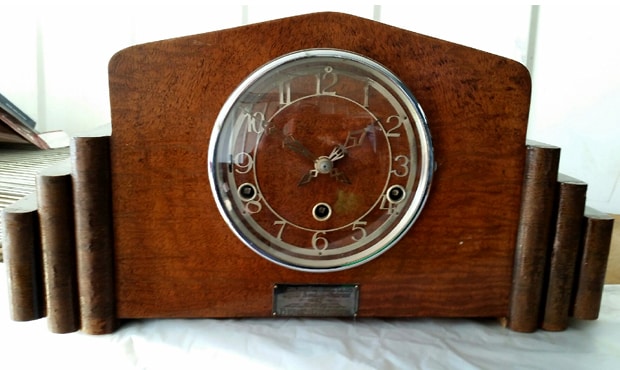
Deacon’s mantel clock.
In clearing the house after the death of their mother Jean, Bob and his older brother Brian resolved to share items with family friends. An old friend of Jean’s from Kerang was given the mantel clock, but recently on-sold it to a dealer in Moonee Ponds. The dealer then arranged for the clock to go under the hammer through an auctioneer in Woodend last Sunday, by which time the Deacon boys were alerted.
“You give the item away in good faith and you don’t think any more of it – and then you get an email the Friday before the sale with an image of the mantel clock in the auction room,” Bob said.
“Brian and I weren’t happy that the item had ended up in an auction house and we initially thought the clock might have been stolen until we did a bit of investigating. The auctioneer to his credit was going to withdraw the item until it was determined the clock hadn’t been stolen so I then instructed him to bid on the Deacon family’s behalf, and it’s such a relief that the item is now back with the family.”
From 1942, Bert Deacon represented the Carlton Football Club in 106 senior matches through a ten-year career interrupted by war. On January 3, 1974, he died of a heart attack in Balnarring, and at the time of his death officiated as Carlton secretary.
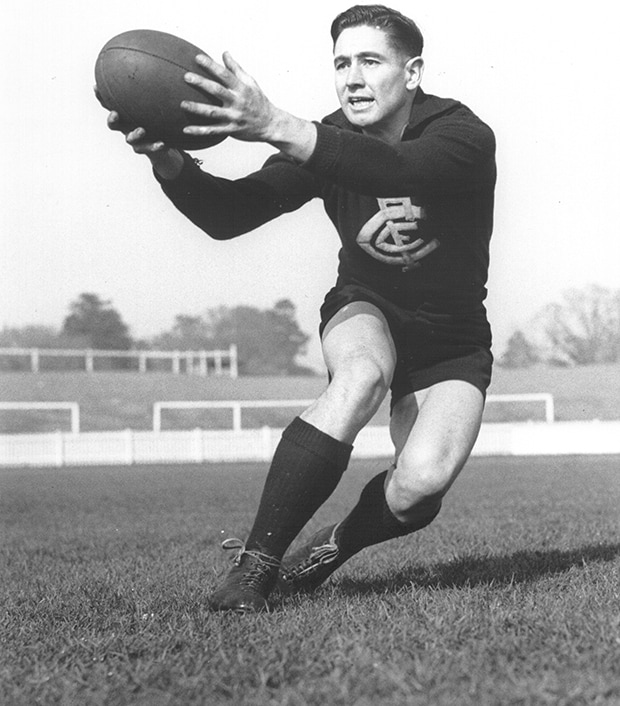
The famous Bert Deacon in action for Carlton.
It’s not the first time that Bert’s prized football artefacts have been lost to the Deacons. The coveted Brownlow Medal was stolen from Jean’s purse (together with her father’s war medals) in a kitchen break-in while she was gardening out the front of the Wood Street home. None of the medals were ever recovered, and a Brownlow replica is now in the keep of Brian’s son.
Bob proudly protects the VFL certificate awarded to his father for winning the prized football trophy – and now the mantel clock.
So what will become of the item? According to Bob, it will be offered as a perpetual trophy to the winner of the Bert Deacon Golf Day tournament, which has been held at Flinders on the Wednesday between Christmas and New Year since 1950.
“If the golf day folds, the clock will again be returned to the family,” Bob said.
“But for as long as it’s in circulation, Dad will be remembered.”
